Honey Garlic Butter Roasted Carrots
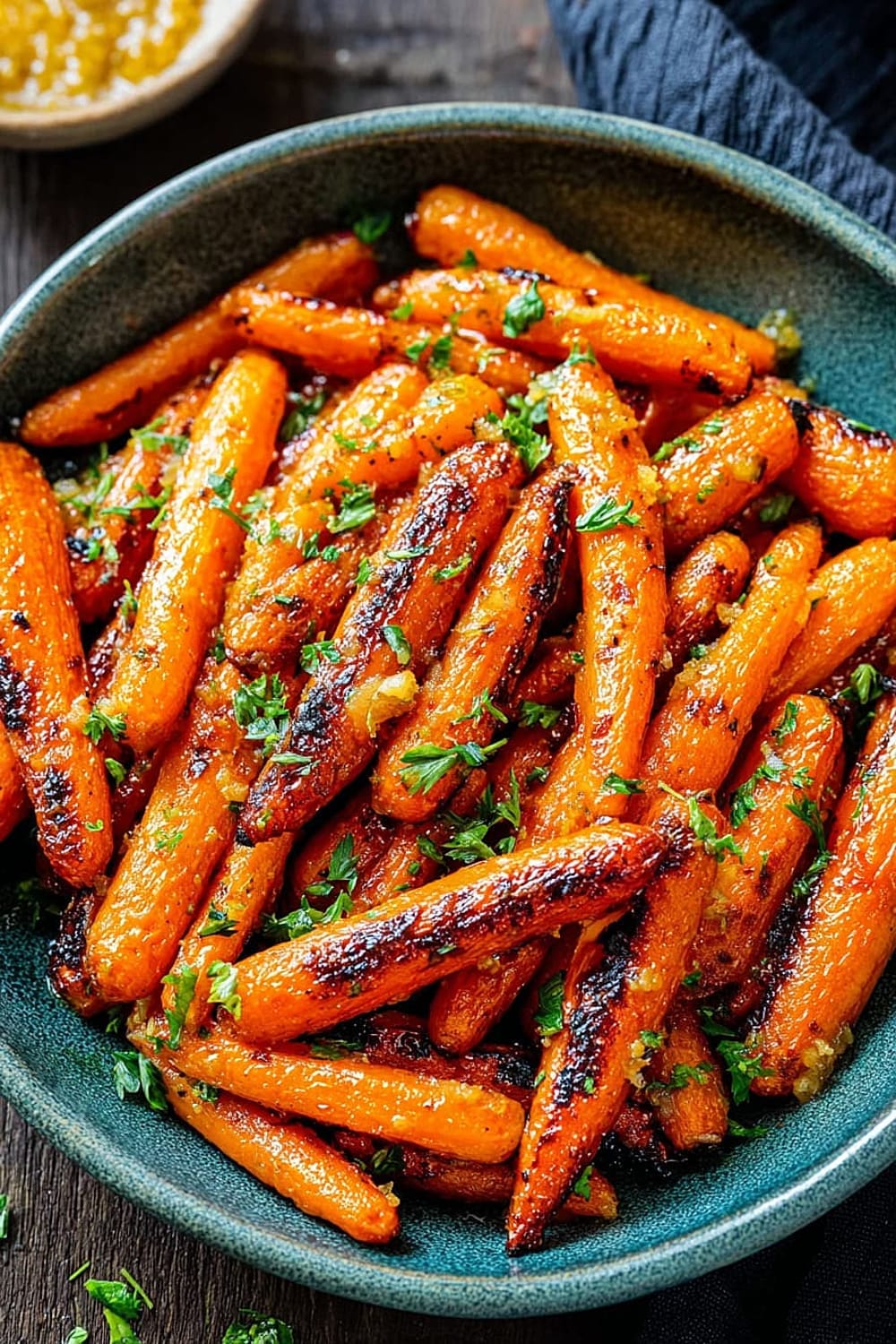
These honey garlic butter roasted carrots are about to become your secret weapon for making vegetables that people actually fight over at the dinner table.
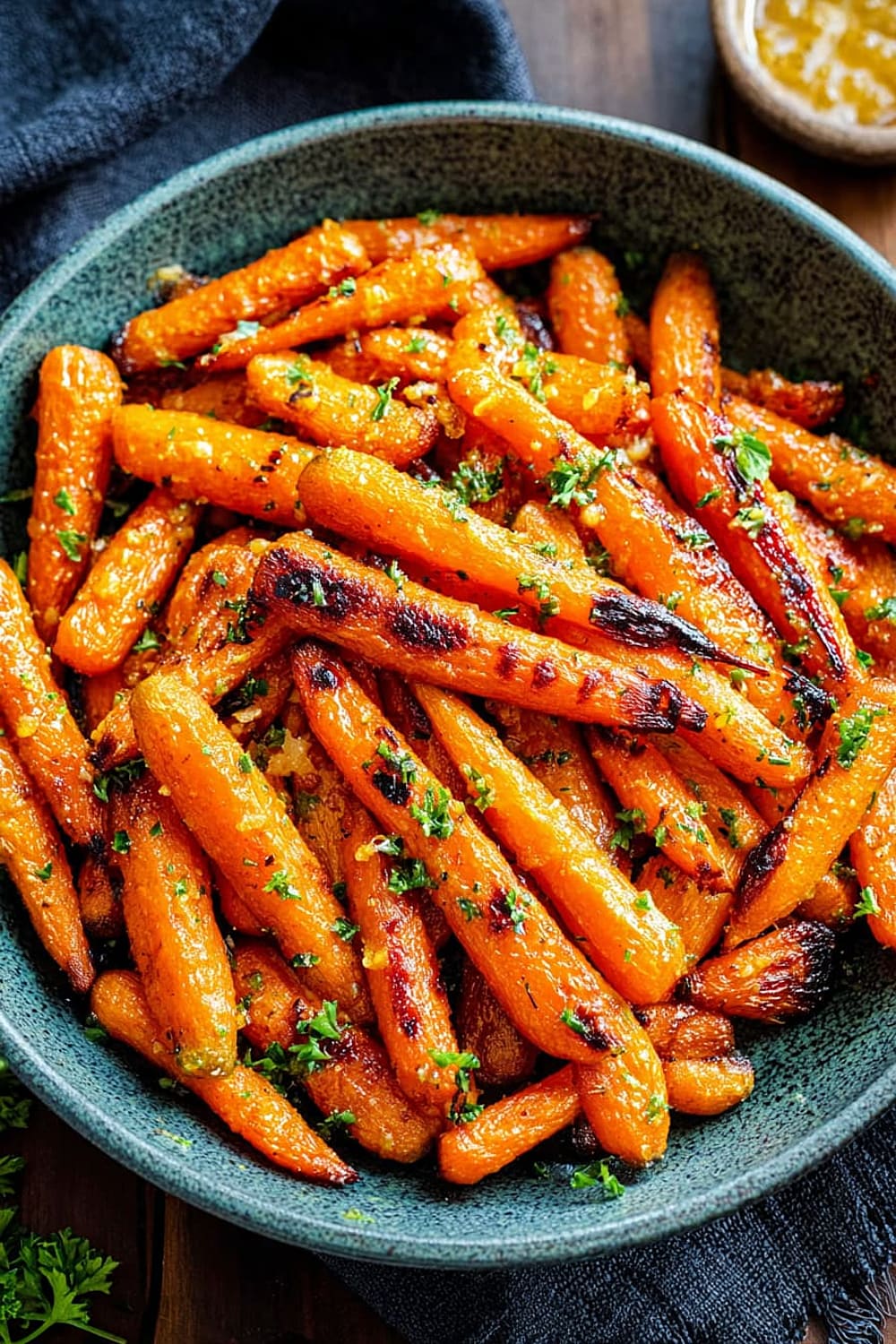
The combination of sweet honey, aromatic garlic, and rich butter transforms humble baby carrots into something that tastes like it came from a fancy restaurant kitchen.
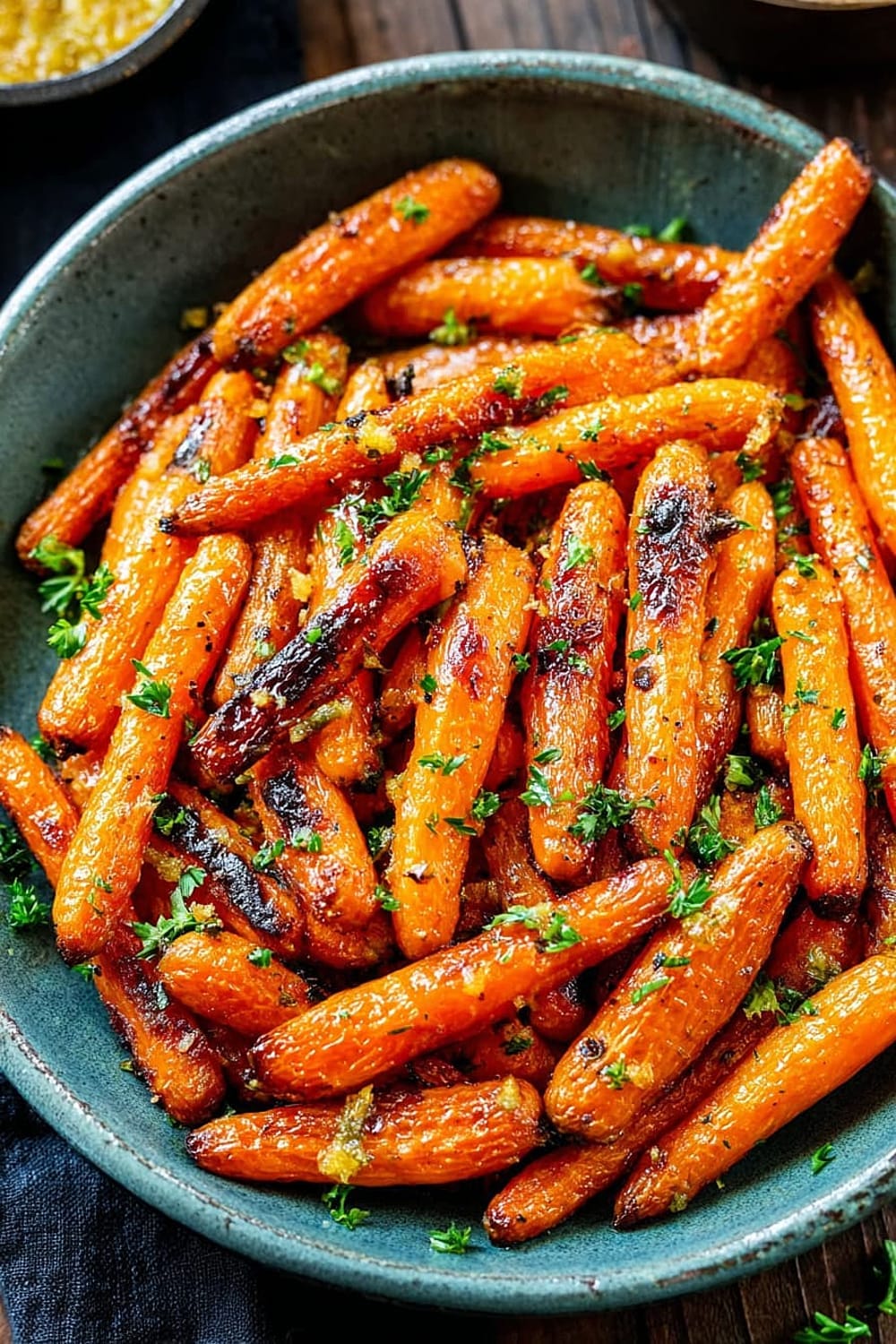
What makes this recipe absolutely brilliant is how it uses a quick boil followed by high-heat roasting to create carrots that are perfectly tender inside with gorgeous caramelized edges.
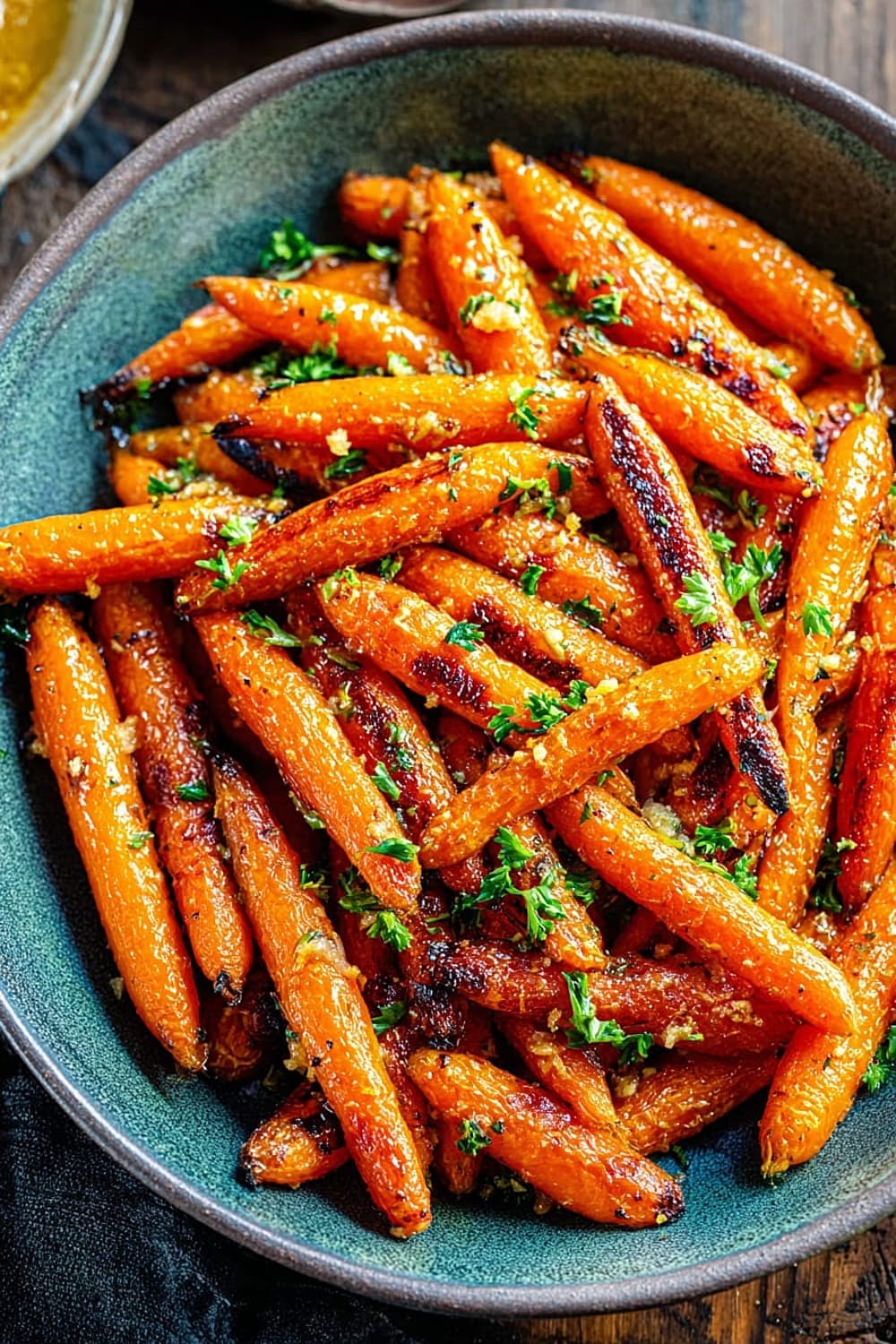
The garlic butter honey glaze doesn’t just coat these carrots—it penetrates every fiber, creating layers of flavor that build with each bite.
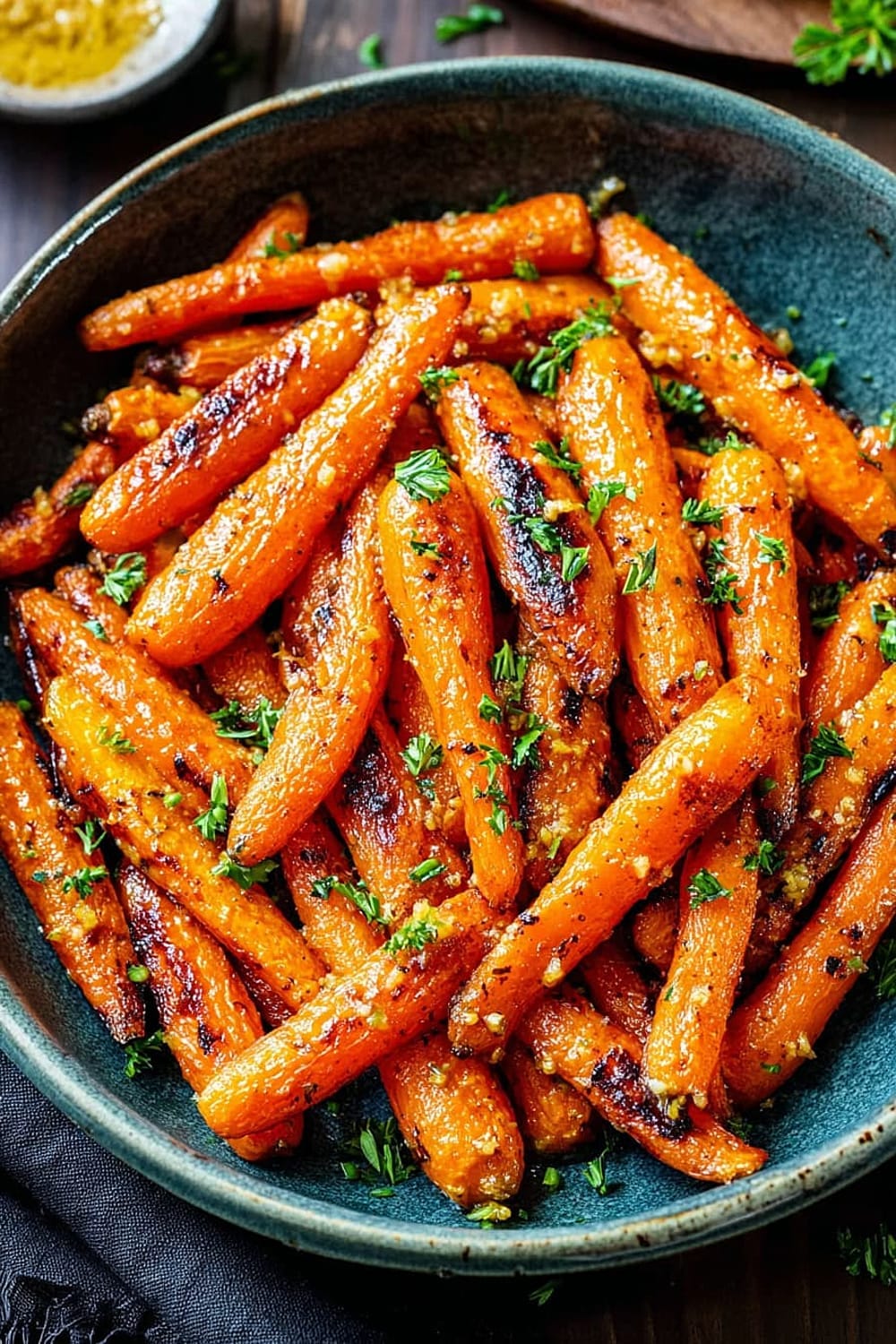
This is the kind of side dish that makes people lean over and whisper “what did you DO to these carrots?” while secretly taking thirds.
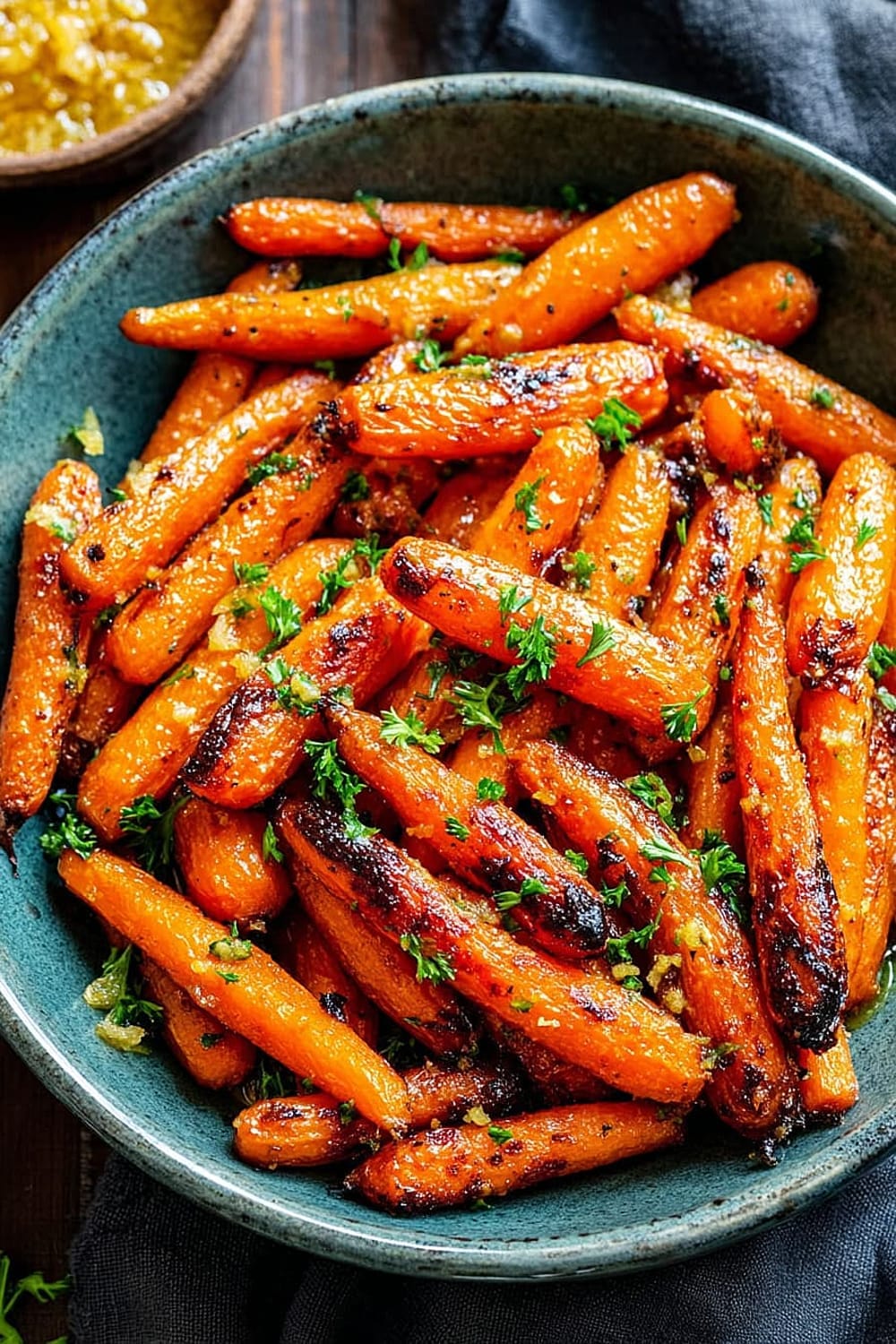
Best of all, the entire process takes just 25 minutes from start to finish, making it perfect for both weeknight dinners and holiday entertaining.
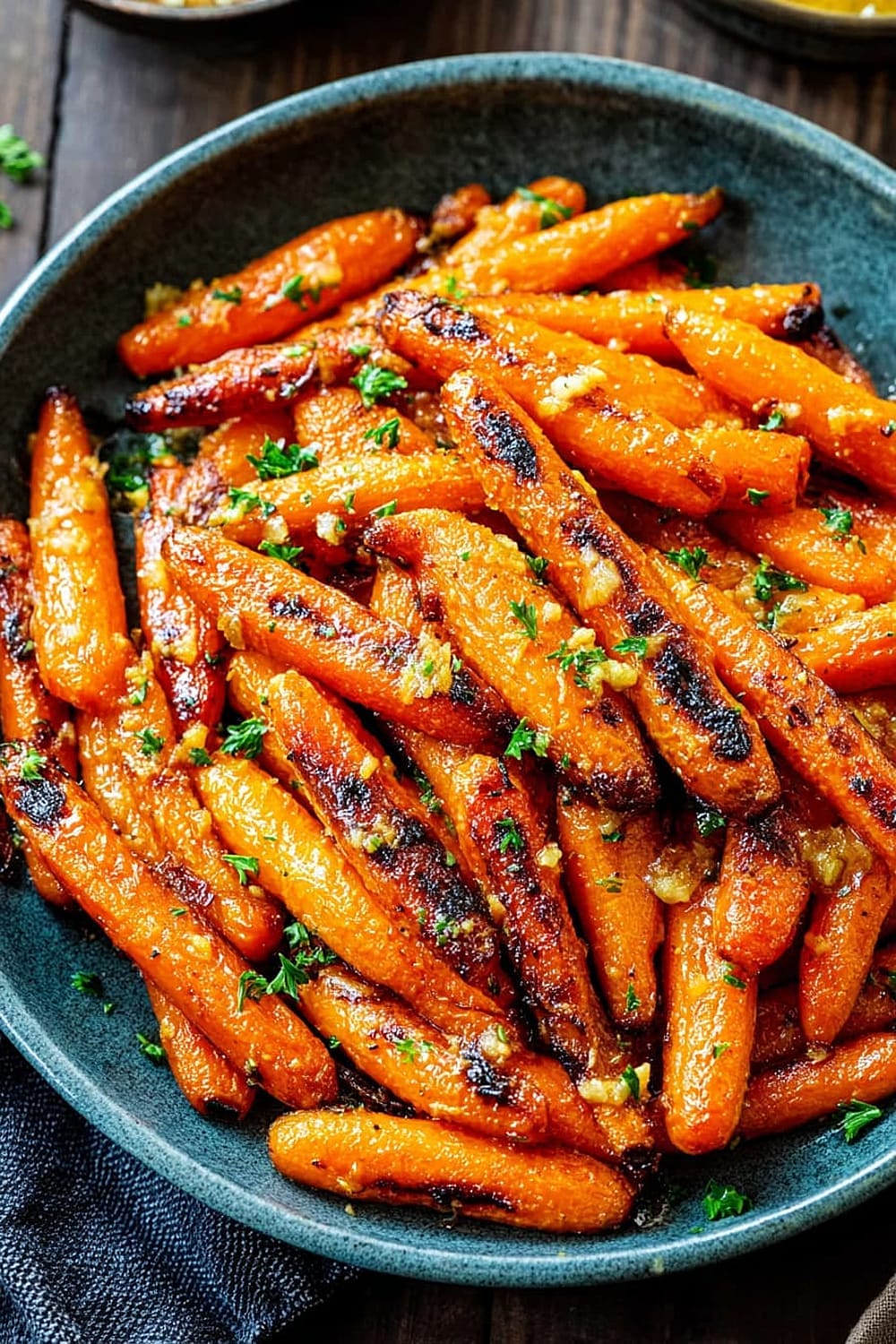
Ingredients
For the Carrots
- 1 package baby carrots
- 1 tablespoon olive oil (extra virgin preferred)
- 1 teaspoon kosher salt
- 1 /2 teaspoon black pepper (freshly ground)
For the Honey Garlic Butter Glaze
- 2 tablespoons butter (unsalted, melted)
- 2 cloves garlic (minced fresh)
- 1 tablespoon honey (raw or local honey recommended)
- 1 teaspoon lemon flaked salt (or flaked sea salt, divided)
Instructions
Preparation
- 1 Bring a large pot of salted water to a rolling boil over high heat. Add the baby carrots and boil for 3-4 minutes until they’re almost tender but still have a slight bite when pierced with a fork. This pre-cooking step ensures perfectly tender carrots that won’t dry out during roasting.
- 2 Drain the carrots thoroughly in a colander and let them sit for 2-3 minutes to allow excess moisture to evaporate. This step is crucial for achieving proper caramelization in the oven.
- 3 Preheat your oven to 450°F (232°C) and line a large baking sheet with parchment paper or aluminum foil for easy cleanup.
Initial Roasting
- 4 In a large mixing bowl, toss the drained carrots with 1 tablespoon olive oil, 1 teaspoon kosher salt, and 1/2 teaspoon black pepper until evenly coated. The oil should lightly coat each carrot without pooling in the bowl.
- 5 Spread the seasoned carrots in a single layer on the prepared baking sheet, ensuring they don’t overlap. Overcrowding will cause steaming instead of roasting, preventing proper caramelization.
- 6 Roast for 10 minutes, then remove from oven and toss the carrots with tongs or a spatula. Return to oven immediately to maintain consistent cooking temperature.
Glaze Preparation and Final Cooking
- 7 While the carrots continue roasting, melt 2 tablespoons butter in a small saucepan over low heat. Add the minced garlic and 1 tablespoon honey, along with 1/2 teaspoon of the flaked salt. Stir constantly for 30-60 seconds until fragrant, then remove from heat to prevent burning.
- 8 After the carrots have roasted for an additional 5 minutes (15 minutes total) and are beginning to show golden-brown edges, remove them from the oven and immediately drizzle with the honey garlic butter mixture.
- 9 Toss the carrots thoroughly to coat evenly with the glaze, then return to the oven for 5 more minutes. The glaze should be bubbling and the carrots should be developing deeper caramelization.
- 10 Remove from oven, toss once more, then switch your oven to broil mode. Broil for 2-3 minutes, watching carefully, until the carrots achieve a beautiful golden-brown color with slightly crispy edges.
- 11 Remove from oven and immediately sprinkle with the remaining 1/2 teaspoon flaked lemon salt. Serve hot while the glaze is still glossy and aromatic.
Recommended Equipment and Kitchen Tools
Recommended Tools (for best results)
- Large rimmed baking sheet – Essential for proper heat circulation and preventing carrots from rolling off during tossing
- Parchment paper – Creates a non-stick surface and makes cleanup effortless while preventing burning
- Kitchen tongs – Perfect for tossing hot carrots without scratching your baking sheet or burning your fingers
- Small saucepan – Ideal for melting butter and creating the glaze without overheating
Helpful Upgrades
- Instant-read thermometer – While not essential, it helps ensure your oven temperature is accurate for optimal caramelization
- Silicone spatula – Great for scraping every bit of that precious honey garlic butter from the saucepan
- Large mixing bowls – Stainless steel bowls make tossing carrots with oil and seasonings much easier
Nice-to-Have Options
- Microplane grater – Creates perfectly minced garlic with minimal effort and maximum flavor release
- Digital kitchen scale – For those who prefer measuring ingredients by weight for consistent results every time
Recipe Variations and Dietary Modifications
Dairy-Free Modifications
- Replace 2 tablespoons butter with equal amount of vegan butter or 2 tablespoons olive oil
- Add 1/4 teaspoon garlic powder to compensate for reduced richness from dairy-free substitution
- Consider adding 1 teaspoon balsamic vinegar for extra depth of flavor
Vegan Modifications
- Use vegan butter or additional olive oil instead of regular butter
- Replace honey with maple syrup or agave nectar in equal amounts
- Add 1/2 teaspoon smoked paprika for enhanced umami flavor complexity
Low-Carb/Keto Version
- Replace honey with sugar-free maple syrup or monk fruit sweetener (use half the amount)
- This modification reduces carbs by approximately 4 grams per serving
- Add 1 tablespoon fresh thyme for additional flavor without carbs
Flavor Variations
- Mediterranean Style: Add 1 teaspoon dried oregano and 2 tablespoons crumbled feta after roasting
- Asian-Inspired: Replace honey with rice vinegar and add 1 teaspoon sesame oil and sesame seeds
- Herb-Crusted: Toss with 2 tablespoons fresh rosemary and 1 tablespoon fresh thyme before final broiling
- Spicy Version: Add 1/4 teaspoon red pepper flakes to the garlic butter mixture
Nutritional Information and Health Benefits
Key Nutritional Highlights
Each serving provides approximately 95 calories with 4 grams healthy fats, 15 grams carbohydrates, and 3 grams fiber. The baby carrots contribute significant beta-carotene, while the olive oil provides monounsaturated fats that support heart health. The honey adds natural sweetness with trace minerals, and garlic contributes allicin compounds known for their anti-inflammatory properties.
Health Benefits of Main Ingredients
Baby carrots are powerhouses of vitamin A (over 200% daily value per serving), supporting eye health and immune function. The beta-carotene acts as a potent antioxidant, protecting cells from oxidative stress. Garlic contains allicin and sulfur compounds that may help reduce blood pressure and cholesterol levels. Olive oil provides vitamin E and polyphenols that support cardiovascular health. The roasting method preserves most nutrients while enhancing flavor through caramelization.
Dietary Considerations
This recipe is naturally gluten-free and vegetarian. It contains dairy (butter) but can easily be made vegan with substitutions. The dish is relatively low in sodium when using the specified amounts, making it suitable for most dietary restrictions. Each serving provides about 15% daily fiber needs and fits well into Mediterranean-style eating patterns.
Smart Swaps and Ingredient Substitutions
Common Substitutions:
- Baby carrots → 2 pounds regular carrots, peeled and cut into 2-inch pieces
- Olive oil → Avocado oil or melted coconut oil for higher smoke point cooking
- Honey → Maple syrup, brown rice syrup, or agave nectar in equal amounts
- Kosher salt → Sea salt or table salt (use 3/4 the amount)
Budget-Friendly Swaps:
- Flaked lemon salt → Regular sea salt plus 1/2 teaspoon lemon zest
- Fresh garlic → 1/2 teaspoon garlic powder (add to butter mixture)
- Raw honey → Regular honey or light corn syrup
Pantry Emergency Substitutions:
- Butter → Olive oil or vegetable oil (increases by 1 tablespoon for richness)
- Fresh garlic → 1/2 teaspoon granulated garlic mixed into the oil
- Baby carrots → Frozen carrots (thaw and pat dry first, reduce initial boiling time)
Pro Tips for Substitutions:
- When using regular carrots, cut them uniformly for even cooking
- Store leftover flaked salt in an airtight container for up to 6 months
- Adjust cooking time by 2-3 minutes when using thicker carrot pieces
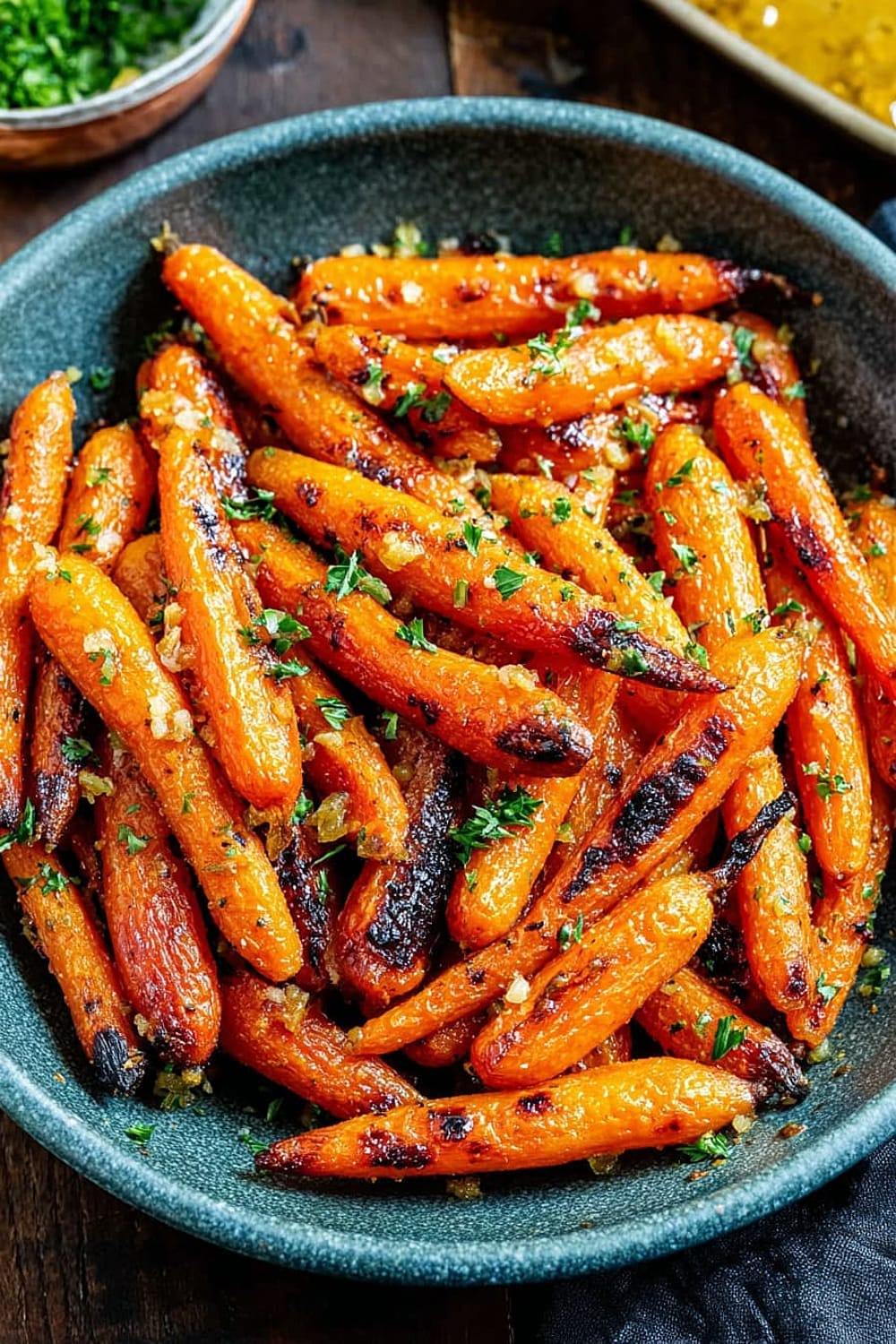
Make It Diabetes-Friendly
Sugar Substitutions:
- Replace 1 tablespoon honey with 1 teaspoon sugar-free maple syrup or 1/2 teaspoon monk fruit sweetener
- This modification reduces carbohydrates by approximately 8 grams per serving
- Add 1 teaspoon apple cider vinegar to enhance sweetness perception without added sugars
Portion & Timing Tips:
- Stick to 1/4 of the recipe per serving (approximately 3/4 cup cooked carrots)
- Estimated 7 grams net carbs per modified serving versus 15 grams in original recipe
- Pair with lean protein and healthy fats to slow glucose absorption
- Consider serving alongside grilled chicken or baked fish for balanced blood sugar response
Cooking Method Benefits:
- Roasting carrots actually concentrates natural sugars but doesn’t add glycemic load like processed sweeteners
- The fiber content remains intact, helping to moderate blood sugar spikes
- Olive oil and butter slow carbohydrate absorption when eaten together
Total Carb Reduction: Modified version contains approximately 50% fewer carbs than original recipe while maintaining full flavor profile.
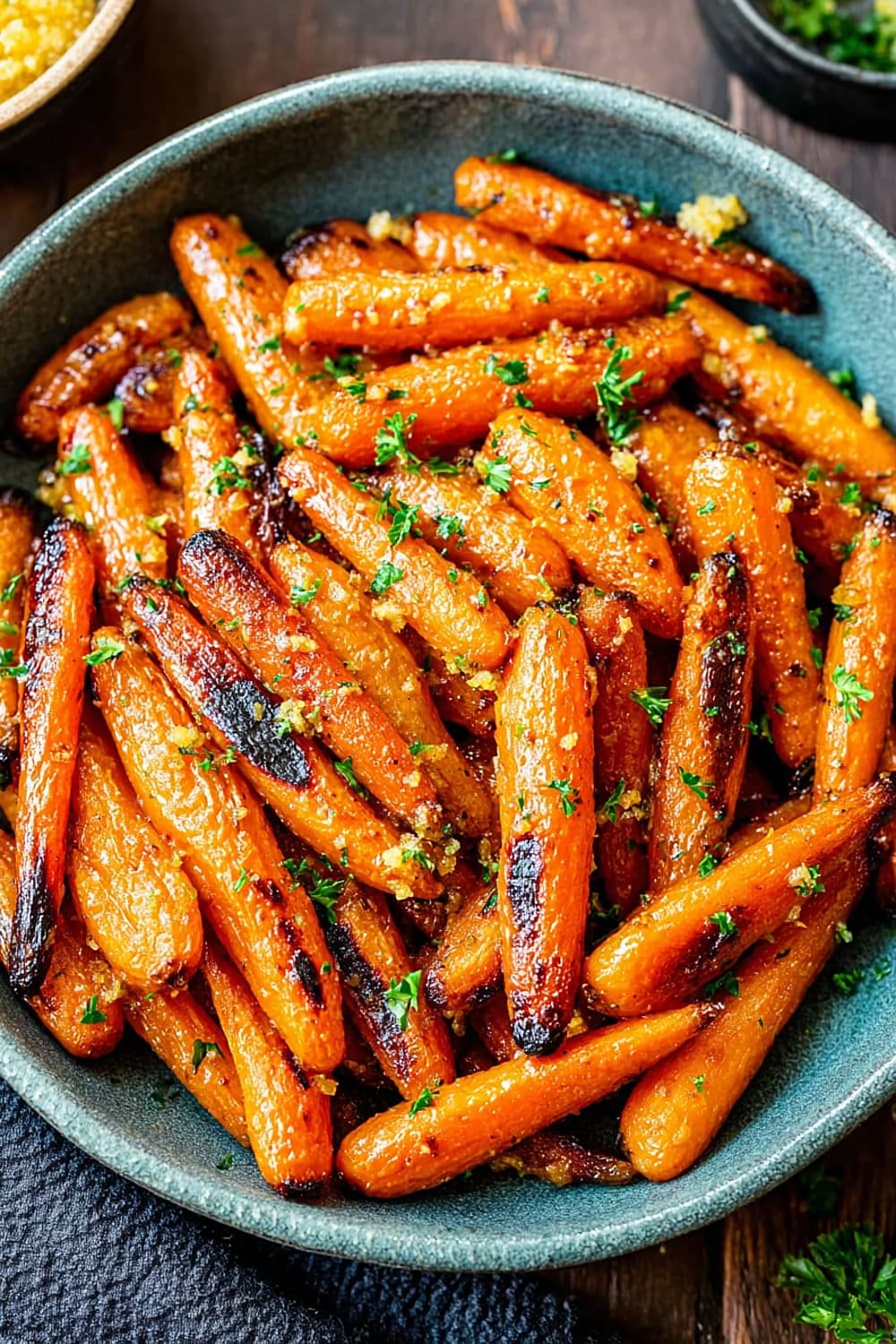
Perfect Pairing Suggestions
Beverage Pairings
A crisp Sauvignon Blanc or Pinot Grigio complements the honey sweetness while cutting through the butter richness. For beer lovers, a wheat beer or light lager provides refreshing contrast. Non-alcoholic options include sparkling apple cider, lemon-infused sparkling water, or iced green tea with mint. During colder months, warm herbal tea with chamomile or ginger enhances the cozy comfort-food appeal.
Side Dish Recommendations
These carrots pair beautifully with herb-crusted pork tenderloin, roasted chicken thighs, or grilled salmon. For vegetarian meals, serve alongside quinoa pilaf or wild rice stuffing. The sweet-savory profile complements roasted Brussels sprouts, garlic mashed potatoes, or fresh dinner rolls. Consider adding steamed broccoli or sautéed spinach for color and nutritional balance.
Complete Meal Ideas
Build a Sunday dinner around these carrots with roast beef, Yorkshire pudding, and green beans almondine. For holiday entertaining, pair with glazed ham, sweet potato casserole, and cranberry sauce. Weeknight dinners work well with baked chicken breasts, rice pilaf, and simple green salad.
Occasion Suggestions
Perfect for Thanksgiving, Christmas dinner, Easter brunch, or casual family gatherings. The elegant presentation makes them suitable for dinner parties, while the simple preparation works for meal prep and weeknight dinners.
Pro Tips and Troubleshooting
Professional Techniques
Cut carrots uniformly if using regular carrots instead of baby carrots to ensure even cooking. Pat carrots completely dry after boiling to prevent steaming during roasting. Preheat your baking sheet for 2 minutes before adding carrots for better initial searing. Don’t overcrowd the pan – use two baking sheets if necessary for proper caramelization.
Common Mistakes and Solutions
Problem: Carrots turn out mushy. Solution: Reduce initial boiling time and ensure carrots still have slight firmness before roasting. Problem: Glaze burns during broiling. Solution: Watch carefully during broil step and remove immediately when golden. Problem: Uneven browning. Solution: Toss carrots every 5 minutes during roasting for consistent color.
Storage and Reheating
Store leftovers in refrigerator for up to 4 days in airtight container. Reheat in 350°F (175°C) oven for 8-10 minutes to restore caramelized texture. Avoid microwave reheating which creates soggy carrots. Freezing not recommended as texture becomes mushy upon thawing.
Make-Ahead Strategies
Complete steps 1-6 up to 2 hours ahead, then continue with glaze and final cooking when ready to serve. Prepare glaze mixture and store covered at room temperature for up to 4 hours.
These honey garlic butter roasted carrots prove that the simplest ingredients, when treated with care and proper technique, can create the most memorable dishes that bring people together around the table.